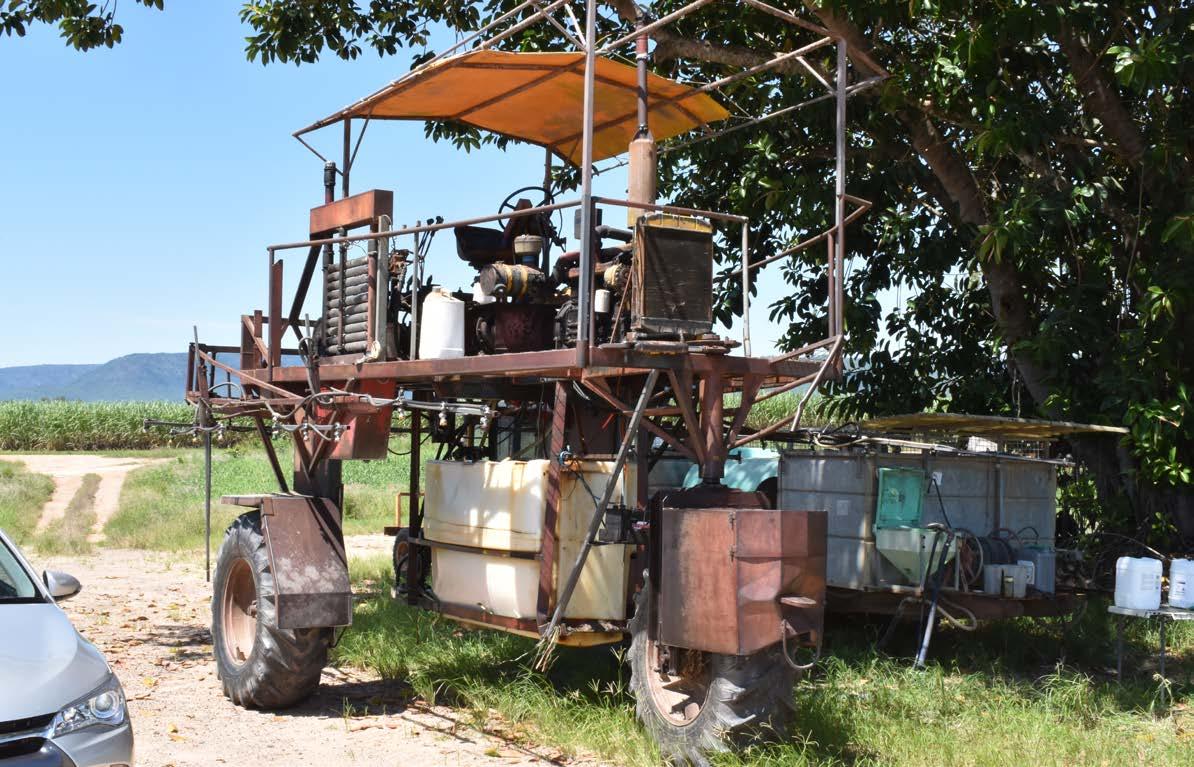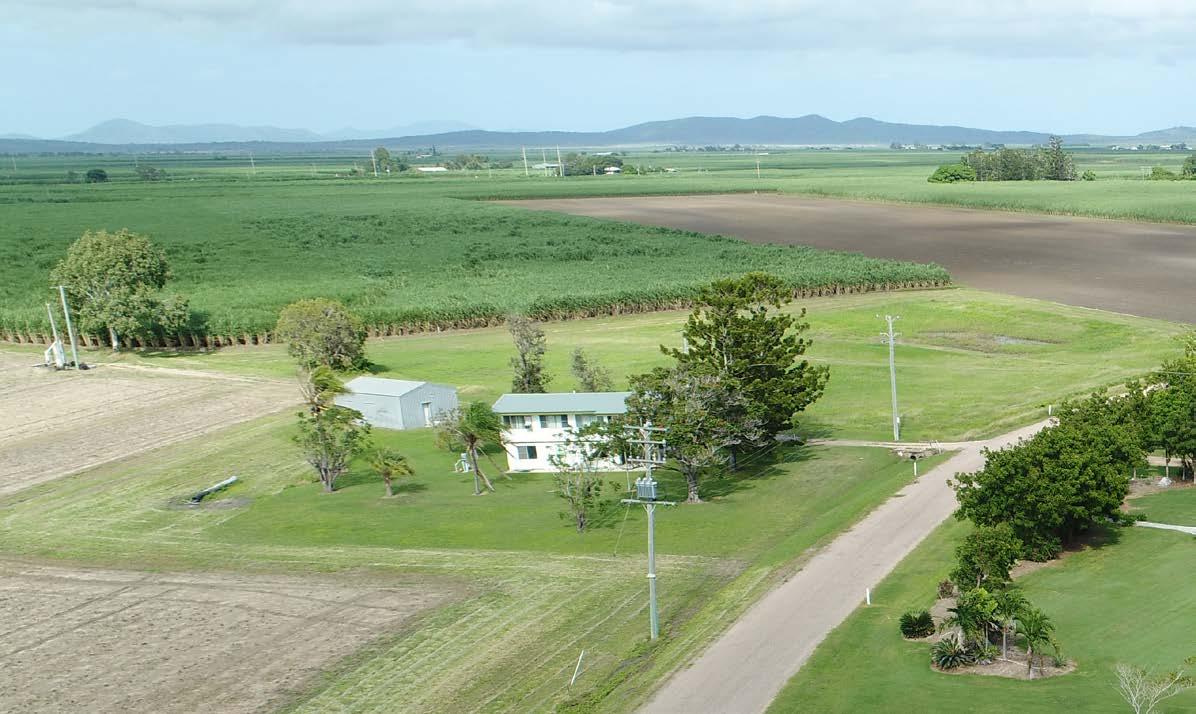
10 minute read
QSL report
QSL MARKET UPDATE
Current as of 26 October 2020.
Advertisement
Sugar Currency
The bulls made a return in October as the new prompt ICE 11 contract, March 2021, rallied above 14 US c/lb to peak at 14.94 c/lb at the time of writing. Speculators continued their heavy buying, pushing their net-long position to 252,000 lots. This is the largest net-long position since 2016 and is continuing to support the rally as speculators see value potential in commodities off the back of general US Dollar weakness. The lack of detail around the Indian sugar export subsidy is supportive of the current optimistic sentiment, despite the expectation of a similar announcement to last year. Until the subsidy is announced, 15 USc/lb is not unrealistic, providing attractive 2020-Season hedging levels for Australian sugar producers. Second-wave COVID-19 infections continue to increase throughout Europe and the US, weighing on market sentiment, putting pressure on US equity markets and making commodities such as sugar more attractive for investors. ICE 11 trading range going forward: Broader trading range to be expected around 12.50 to 16.00 USc/lb. Closely watching: Indian export subsidy news, La Nina weather updates, speculative activity, trading volumes and overall technical indicators.
KEY INDICATORS
26/10/2020
ICE11 Prompt (MAR21) 14.72 USc/lb Brazilian Real/$US exchange rate 5.62 BRL Brent Crude Oil $US41.77/barrel Ethanol/Raw Sugar Parity 11.39 USc/lb Net Spec Position 252,000 (net long)
Monthly change
+1.90 USc/lb +0.02 BRL -$US0.49 +1.24 USc/lb +73,000 The Aussie Dollar (AUD) has remained volatile over the last month, trading a range from 0.7021 to a 0.7243 against the US Dollar (USD). The key psychological level of 70 cents appears to be holding a firm line of support for the currency. Australian cotton producers have become the latest casualties in the ongoing trade tensions with China, with reports that our largest trading partner has told its spinning mills to stop buying Australian cotton. The market took this latest development as another body blow for our relationship with China and a headwind for the Australian Dollar going forward. The RBA has signalled a relatively significant quantitative easing program and a rate cut ahead, with the market already factoring in a 15-basis-point cut for their November meeting. As we start to exit the various COVID-19 lockdowns in place around the country, the RBA appears keen to maintain accommodative policy settings in a bid to aid economic recovery, the implications of which are likely to put the brakes on our currency. Heightened volatility is to be expected as the US election draws near and the possibility of a contested result very likely. AUD/USD trading range going forward: 0.7000 to 0.7500 Risks Ahead: US Presidential election, Australia-China relationships, RBA rate cuts.
26/10/2020
$AUS/$US exchange rate $US0.7134 $US Index 92.77 Chinese Yen/$US exchange rate 6.69 CNY S+P 500 Index 3,465.39 RBA Overnight Cash Rate 0.25%
Monthly change
-$US0.0039 -1.6210 -0.1223 CNY +228.47 -
RAW SUGAR PRICES $500 AUD Per Tonne Actual $360 $380 $400 $420 $440 $460 $480 $340 Jun-19 Jul-19 Aug-19 Sep-19 Oct-19 Nov-19 Dec-19 Jan-20 Feb-20 Mar-20 Apr-20 May-20 Jun-20 Jul-20 Aug-20 Sep-20 Oct-20
2020 Season 2021 Season 2022 Season 2023 Season
This is a whole-of-season ICE 11 price chart current as of 23.10.20, based on the Target Price Contract’s current 5:1 pricing ratio for the 2020 Season and 1:2:2:1 pricing ratio for the 2021, 2022 and 2023 Seasons. Disclaimer: This report contains information of a general or summary nature and is based on information available to QSL from many sources. While all care is taken in the preparation of this report, the reliability, accuracy or completeness of the information provided in the document is not guaranteed. The update on marketing and pricing activity does not constitute financial, investment advice. You should seek your own financial advice and read the QSL Pricing Pool Terms, which are contained on QSL’s website. Nothing contained in this report should be relied upon as a representation as to future matters or that a particular outcome will be achieved. Information about past performance is not an indication of future performance. The information in the report is current as at the time of publication and is subject to change, as the information is based on many assumptions and is subject to uncertainties inherent in any market. QSL does not accept any responsibility to any person for the decisions and actions taken by that person with respect to any of the information contained in this report.
QSL GROWER Brazil PRICING UPDATE Australia
250 300
Your Trusted Partner
350 400 450
Grower Pricing
The current market rally has seen increased grower pricing activity in the past month, with QSL 2020-Season Target Price orders filled as high as $445/ tonne actual during this period. Growers with outstanding Target orders are reminded that they must factor in the current roll adjustment of -$9.43 in order for their order to be filled. For example, for an order set at $440 in the 2020-Season Target Price contract to be filled, the market must now reach $440 + $9.43. The next 2020-Season Target Price Contract roll is scheduled for 22 February 2021. After this date, any unfilled 2020-Season Target Price Contract orders will have their pricing window extended and an additional roll adjustment will apply. Growers in MSF Sugar districts are unable to access this third roll and will have any unfilled orders remaining after this date filled by QSL at the next market opportunity.
31 October 2020 Deadline:
Last day to choose QSL as your marketer for the 2021 Season
Last day to select the 2021 Self-Managed Harvest Pool
Last day to nominate tonnes into: • 2021 Early-Start Actively Managed Pool • 2022 2-Season Actively Managed Pool • 2023 3-Season Actively Managed Pool are encouraged to produce ethanol as opposed to exporting sugar.
QSL GROWER-MANAGED PRICING FILLS – 2020, 2021 & 2022 SEASONS
Tonnes 140,000
120,000
100,000
80,000
60,000
40,000
20,000
0 <$400 $410 $420 $430 $440 $450 $460 $470 $480
$490 >$500 2020 Season 2021 Season 2022 Season
This chart captures all pricing achieved as of 23.10.20 using QSL’s Target Price Contract, Individual Futures Contract and Self-Managed Harvest products. Prices quoted at AUD//tonnes actual gross.
Increasing cash flow prior to Christmas
QSL growers have until 30 November 2020 to elect to receive Accelerated Advances for 2020. This program increases the Advance rate paid for eligible tonnes to 90% from December.
Macroeconomic Factors and the Sugar Price
There are many influences outside fundamental supply and The US Dollar also has an impact on the ICE 11 demand factors which can affect the ICE 11 sugar price. sugar price. Recent US Dollar weakness has driven investors These are known as macroeconomic factors and can play a role to look for alternative ways to invest their money, one of in shaping the world sugar market. which being investing in commodities such as sugar. While these factors may not always have as strong a Equities provide another alternative market for correlation to the fundamentals of sugar production investors in conjunction with commodity markets. and sales, they still help explain the behaviour of Depending on the returns avaliable in either market, commodity prices. it could promote investors to change their attention Some examples of factors in the macroeconmic and funds between the two. environment include: The price of oil typically plays an important
Foreign exchange rates, especially the Brazilian role in the global econcomy and so is considered
Real (BRL), weigh heavily on the sugar market. A a macroeconomic factor influencing sugar. The oil weaker BRL should encourage Brazilian producers price typically affects the price of ethanol, which to export more of their sugar, flooding the market in turn shapes ethanol parity in Brazil, weighing with supply and driving the price of sugar downwards. heavily on the sugar market in times of weakness, such as
Alternatively, a stronger BRL generally boosts sugar prices as mills we saw in April. See you local QSL team or visit www.qsl.com.au for details.
FARMER FRIENDLY BUDGET
By Warren Males CANEGROWERS Head - Economics
WHAT'S IN IT FOR YOU?
GROWERS WILL BENEFIT FROM THE ABILITY TO FULLY WRITEOFF PURCHASES OF NEW AND SECONDHAND ASSETS.
The 6 October 2020 Federal Budget had measures to boost consumption, support business recovery and stimulate economic growth and some of them are very relevant to sugarcane growing businesses.
Personal income tax cuts, back dated to 1 July this year, are designed to boost spending power across the community. The upper limit of the 19% personal income tax bracket will rise to $45,000 and the 32.5% marginal tax threshold will lift from $90,000 to $120,000. People earning $48,000 to $90,000 will gain an extra $1,080. Those in the higher tax bracket will receive tax relief of $2,745 for singles, and up to $5,490 for two income families compared with what they paid in 2017-18. As part of the Australian Government’s response to COVID-19, the instant asset write-off limit was increased from $30,000 to $150,000 and the business turnover threshold was increased from $50 million to $150 million.
The Budget takes this further. Until June 2022, businesses with an annual turnover of less than $5 billion can write off the full value of any eligible asset they purchase for their business in the year of purchase. Growers will also benefit from the ability of small to medium sized businesses (turnover less than $50 million) to fully expense purchases of second-hand assets.
Practically, it means growers will be able to claim full depreciation on all new machinery, equipment and eligible farm infrastructure purchases this financial year and next year, writing it off in the year of purchase. Growers (small businesses less than $10 million turnover) will be able to claim this year any outstanding depreciation amounts carried forward from previous years. For the first time, the government is enabling loss carry-back. This means losses incurred up to June 2022 can be offset against profits made in or after the 2018-19 financial year. In normal circumstances, losses made this year are offset against future profits. Offsetting against previous profits means there is no need to wait until your business returns to profit. The depreciation changes and loss carry-back should provide many businesses, farms included, significant tax credits. The tax savings, effectively a cash injection, are designed to encourage on-farm investment and promote employment. In addition to measures designed to promote business investment, the extension of temporary visas to support the agricultural workforce, plus JobMaker credits for hiring workers ($200 per week for those under 30 and $100 per week for those between 30 and 35), provide opportunities for farmers and farm services.
As generous as it is, the accelerated depreciation measure is a matter of timing. It provides immediate benefits for businesses by bringing forward tax credits that otherwise would be available in future years. In most pursuits timing is important. It certainly is in supporting Australia’s economic recovery from the COVID-19 doldrums.
Time for an upgrade? Growers will be able to write-off the expense of purchasing new or second-hand equipment.

INSTANT ASSET WRITE-OFF
• Limit of instant asset write-off increased from $30,000 to $150,000 for businesses with a turnover of less than $150 million. • Until June 2022, businesses with a turnover of less than $5 billion can write off the full value of any eligible asset. • Small businesses (less than $10m turnover) can write-down all remaining depreciation on eligible assets.
LOSS CARRY-BACK
Losses incurred up to June 2022 can be offset against profits made in or after the 2018-19 financial year.
INCOME TAX BREAKS
Upper limit of 19% tax bracket rises from $37,000 to $45,000. Upper limit of 32.5% tax bracket rises from $90,000 to $120,000. Higher tax bracket will receive tax relief of $2,745 for singles, and up to $5,490 for two income families compared with what they paid in 2017-18.
JOBMAKER CREDITS
• Farming enterprises can get JobMaker credits for hiring workers ($200 p/w for those under 30 and $100 p/w for those between 30 and 35).










